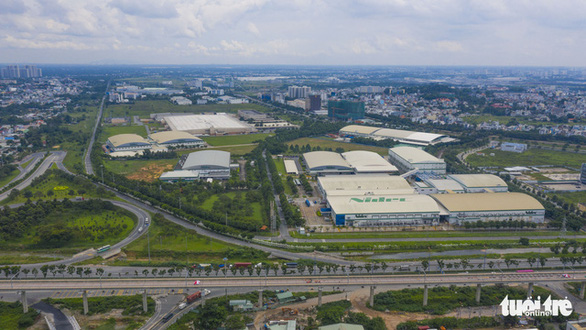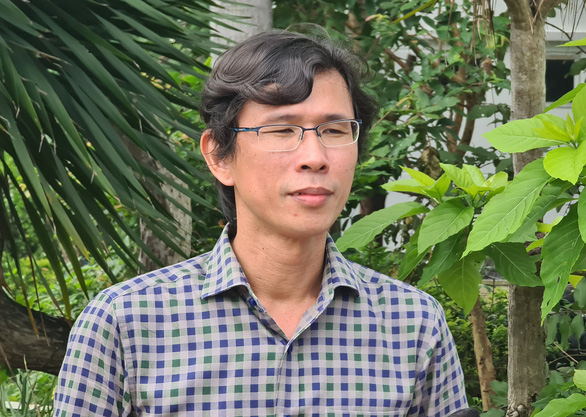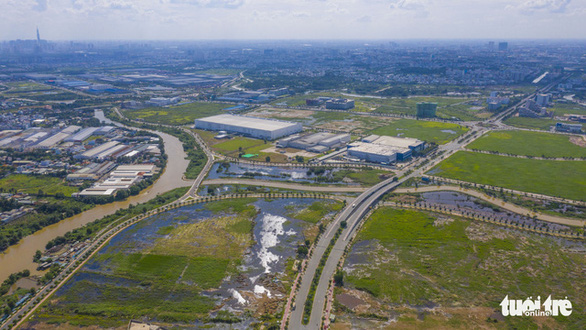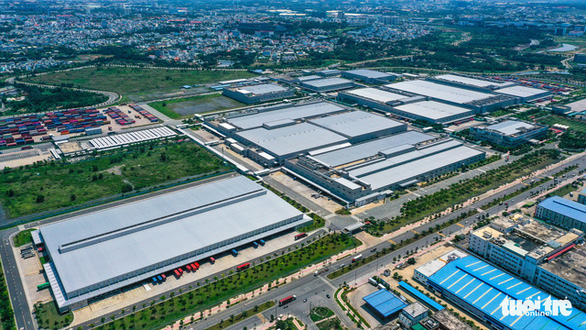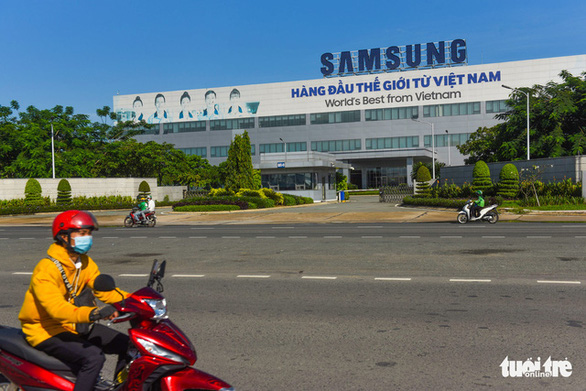The Saigon Hi-Tech Park (SHTP) in Ho Chi Minh City’s District 9 is expected to become an incubator for Vietnamese intellectuals, talent, and high-tech firms.
It is time to focus on developing domestic firms capable of innovative transformation and high-tech product manufacturing in order to meet the demands of local consumers and the export market, said Nguyen Anh Thi, head of the SHTP Management Board.
In a conversation with Tuoi Tre (Youth) newspaper, Thi unveiled the vision of Ho Chi Minh City’s authorities in attracting and fostering a community of innovative enterprises at SHTP.
After 18 years of attracting businesses into SHTP, are there any changes in development strategies?
SHTP was established 18 years ago with a vision to lay a foundation for high-tech industries [in the city]. We have attracted international giants such as Intel, Nidec, and Samsung thanks to favorable policies on land leasing and taxation, among others.
Nonetheless, the foundation for high-tech industries is manpower. We have to create an environment to strengthen manpower training as this is the most important factor of production.
In recent times, domestic firms have started supplying services to high-tech enterprises. After 18 years, Vietnam has met higher standards in economic and industrial development.
|
|
| This image shows Nguyen Anh Thi, head of the Saigon Hi-Tech Park management board. Photo: Ngoc Hien / Tuoi Tre |
This is the reason why SHTP has changed its goals, orientation, and strategies in investment attraction. It is time to promote the pillar of the economy, the private sector, to include firms with innovative transformation capability and important high-tech enterprises.
Vietnam is still short of high-tech firms and workforces, in both quantity and quality.
Among the current 700,000 firms as listed by the White Book on Vietnamese Businesses 2019, small and micro companies make up a majority and only a few are active in the high-tech industry.
This emphasizes the role of SHTP in the current landscape, helping create high-tech firms and nurture them to become the pillars of the city’s economy.
|
|
| The Saigon Hi-Tech Park in District 9, Ho Chi Minh City. Photo: Quang Dinh / Tuoi Tre |
How can we realize these goals and utilize the advantages in SHTP’s linkage with Vietnam National University-Ho Chi Minh City (VNU-HCM) – one of the most prominent hubs of quality manpower training in southern Vietnam?
It is envisaged by Ho Chi Minh City’s authorities that SHTP will become the nucleus and driving force for economic development in the city. To realize these goals, it is essential that a 'three-stakeholder' linkage between education facilities, enterprises and SHTP is consolidated.
The partnership between VNU-HCM and SHTP has been considered since the construction of the park, but socioeconomic conditions at the time were not favorable enough for cooperation between them, as well as with other enterprises.
However, the partnership has still been nurtured, as the VNU-HCM campus and SHTP are close to each other.
As the current context has brought about favorable conditions, both parties have seen opportunities to make their dream come true. The only issue now is proper action to accelerate the process to meet the common goal.
For the time being, we will focus on the partnership between three aforesaid stakeholders to raise the capacity for innovation and high-tech manufacturing among domestic firms in order to meet domestic as well as international demands.
In the meantime, [the linkages] will serve as the testing ground for new models, mechanisms, and new approaches to boost productivity using technology applications.
To achieve such objectives, universities should act as the prominent [human resources] input provider, while private firms should turn the input into high-tech products and services.
It’s worth pointing out that human-related issues should be considered in long terms rather than provisional phases. In order to yield fruits, we have to stay patient in planting seeds and devising strategies with long-term visions.
|
|
| This image shows the Samsung Electronics Complex in the Saigon Hi-Tech Park of Ho Chi Minh City’s District. Photo: Quang Dinh / Tuoi Tre |
In what ways can the presence of Vietnamese firms as well as Vietnamese intellects at SHTP be elevated?
Most firms at SHTP are foreign direct investment (FDI) enterprises, while domestic firms are still scarce. Further, production value contributions by domestic firms are still limited. These issues should be targeted for improvement due to the fact that we used to prioritize FDI firms in the past.
At present, SHTP has allocated 93 hectares for science facilities, on which high-tech domestic firms can develop. Research and development (R&D) centers as well as R&D-based firms will be concentrated into this space.
As authority leaders planted the seeds 10 years ago, we should continue by nurturing [the space] for the dreams to be realized. In the near future, we will focus on the development of this area and enhance the organic linkages within it. From there, enterprises will give rise to Vietnamese products to take over the market and prove the high-tech industrial capacity of domestic firms.
At the moment, the area has already seen the entrances of many domestic high-tech firms with novel initiatives in automated robotics, unmanned aerial vehicles, simulations in aviation as well as renewable energy.
For now, as we formulated a stable force of domestic firms, the next goal will be to elevate [this force], which requires an impact from the ecosystem. Stakeholders in related fields should be placed next to others to amplify the innovation potential. Small firms, when placed in close proximity, will generate exponential growth in innovation prowess compared to big entities. My vision is quite optimistic, yet the reality requires patience and time – 2-3 years will not be enough, it will take 10 years at least.
|
|
| The Samsung Electronics Complex in the Saigon Hi-Tech Park of Ho Chi Minh City’s District 9. Photo: Quang Dinh / Tuoi Tre |
What are the selling points of this 'highly interactive and innovative' urban area that Ho Chi Minh City is sketching?
The highly interactive and innovative urban area boasts a high concentration of innovation ventures. The mainstay [of this area] should be innovative enterprises, assisted by relevant stakeholders such as universities, investors, and supporting service providers to create an ecosystem.
‘Highly interactive’ means the urban area should be designed for fast and convenient meet-ups between people to discuss, formulate, and develop new ideas, which they can carry out together.
In an innovation-based economy, the enhancement of knowledge lies at the very core. It is a dynamic process that correlates with human interaction. Hence, a highly interactive and innovative urban area is first and foremost an urban area, but it also needs to be designed in a certain way to enable apt conditions for the interaction process between people to transpire.
How will the residential area for workers in the new area be taken care of?
In Singapore, the connections [to and from the area] for easy commuting and standards on lodging and entertainment are the requisites for a science park or a science urban area to thrive. It is clear that these infrastructure standards should be satisfied before any working conditions. This is why the city authority should prioritize lodging infrastructure in the urban area’s master plan if it wants to attract innovative personnel.
It would be unrealistic if we want the 'big shots' to move to the eastern urban area but can’t prepare five-star hotel facilities for them to lodge, or if we wish to draw in innovative personnel who expect high salary and high living standards, but the urban area itself fails to provide such things.
For the time being, there are some 600 experts [working in the urban area], they have to live in District 1 or District 2 despite working [in the innovative area]. Should good living conditions [in the area] exist, the experts would move here and use all of the local services from dining and entertainment to transportation, which will be a huge source of value creation.
Like us on Facebook or follow us on Twitter to get the latest news about Vietnam!



